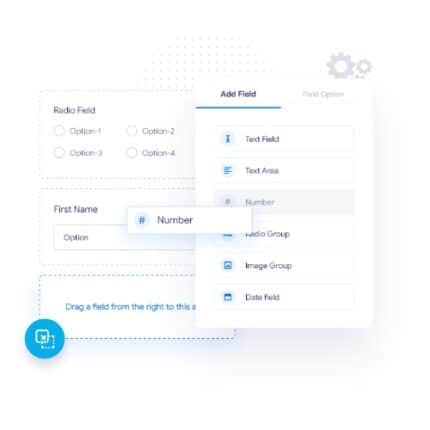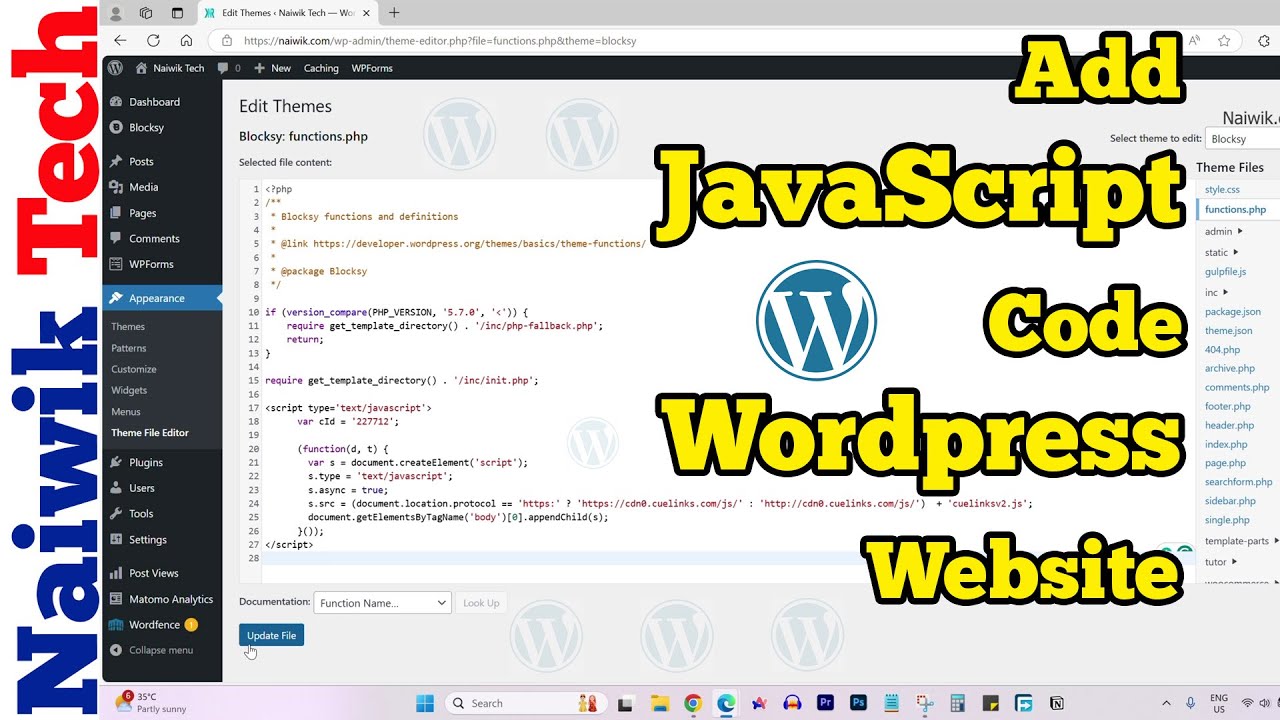Blog
Introduction to WordPress Custom Post Types
WordPress is not just a platform for traditional blogging; its versatility extends into various realms of content management. One of its most powerful features is the ability to create Custom Post Types (CPTs). Whether you’re running an online store, a portfolio site, or a community hub, understanding how Custom Post Types work can drastically enhance your WordPress experience.
What Are Custom Post Types?
Custom Post Types are content types that allow you to create and organize your content beyond the default options like posts and pages. This feature is especially useful for developers and site owners who require tailored content structures. For example, a movie review site might use a Custom Post Type for “Movies,” while an online store could create one for “Products.”
Why Use Custom Post Types?
Utilizing Custom Post Types brings several advantages:
- Organized Content: You can categorize content better, making it easier for users to find what they’re looking for.
- Enhanced Functionality: CPTs often come with additional features such as metadata, custom taxonomies, and unique post templates tailored for specific content types.
- Improved SEO: By structuring your website effectively, search engines can better index your content, improving visibility.
Getting Started with Custom Post Types
Creating a Custom Post Type might seem daunting, but WordPress simplifies the process with its built-in functions. Here’s a step-by-step guide to get you started.
Step 1: Register Custom Post Types
To create a Custom Post Type, you’ll need to add a function to your theme’s functions.php file or create a custom plugin. Here’s a basic example:
php
function create_movie_post_type() {
register_post_type(‘movies’,
array(
‘labels’ => array(
‘name’ => __(‘Movies’),
‘singular_name’ => __(‘Movie’)
),
‘public’ => true,
‘has_archive’ => true,
‘rewrite’ => array(‘slug’ => ‘movies’),
‘supports’ => array(‘title’, ‘editor’, ‘thumbnail’),
)
);
}
add_action(‘init’, ‘create_movie_post_type’);
This code registers a new Custom Post Type called “Movies” with basic support for titles, editors, and thumbnails.
Step 2: Customize with Metaboxes
Metaboxes allow you to add additional fields to your Custom Post Type. For instance, you might want to include release dates, genres, or ratings. You can use the add_meta_box() function to achieve this.
php
function movie_metabox() {
add_meta_box(‘movie_details’, ‘Movie Details’, ‘render_movie_metabox’, ‘movies’, ‘normal’, ‘high’);
}
function render_movie_metabox($post) {
// Nonce field for security
wp_nonce_field(‘movie_details_nonce’, ‘movie_nonce’);
// Retrieve existing data if available
$release_date = get_post_meta($post->ID, '_release_date', true);
?>
<label for="release_date">Release Date:</label>
<input type="date" id="release_date" name="release_date" value="<?php echo esc_attr($release_date); ?>" />
<?php}
add_action(‘add_meta_boxes’, ‘movie_metabox’);
Step 3: Save Custom Fields
To save the data filled in the metabox, you’ll want to hook into the save_post action. By doing this, users’ inputs are securely stored in the database.
php
function save_movie_details($post_id) {
// Check nonce for security
if (!isset($_POST[‘movie_nonce’]) || !wp_verify_nonce($_POST[‘movie_nonce’], ‘movie_details_nonce’)) {
return;
}
// Save release date
if (isset($_POST['release_date'])) {
update_post_meta($post_id, '_release_date', sanitize_text_field($_POST['release_date']));
}}
add_action(‘save_post’, ‘save_movie_details’);
Displaying Custom Post Types
Once your Custom Post Types are registered, the next step is to display them on the front end. You can create a custom template file for your CPT or use custom queries within your theme’s template.
Custom Archive and Single Templates
To create specific archive and single templates, you can name your template files archive-movies.php and single-movies.php. Here’s a basic example for archive-movies.php:
php
<?php get_header(); ?>
Movies Archive
<?php if (have_posts()) : ?>
-
Elementor Pro
Rated 4.82 out of 5(11)$48.38Original price was: $48.38.$1.23Current price is: $1.23.In stock
PixelYourSite Pro
Rated 5.00 out of 5(4)$48.38Original price was: $48.38.$4.51Current price is: $4.51.In stock
Rank Math Pro
Rated 4.71 out of 5(7)$48.38Original price was: $48.38.$4.09Current price is: $4.09.In stock
Related posts
Building a WordPress Plugin | Jon learns to code with AI
How to add custom Javascript code to WordPress website
6 Best FREE WordPress Contact Form Plugins In 2025!
Solve Puzzles to Silence Alarms and Boost Alertness
Conheça AI do WordPress para construção de sites
WordPress vs Shopify: The Ultimate Comparison for Online Store Owners | Shopify Tutorial
Apple Ends iCloud Support for iOS 10, macOS Sierra on Sept 15, 2025
How to Speed up WordPress Website using AI 🔥(RapidLoad AI Plugin Review)
Bringing AI Agents Into Any UI: The AG-UI Protocol for Real-Time, Structured Agent–Frontend Streams
Web Hosting vs WordPress Web Hosting | The Difference May Break Your Site
Google Lays Off 200+ AI Contractors Amid Unionization Disputes
MIT’s LEGO: A Compiler for AI Chips that Auto-Generates Fast, Efficient Spatial Accelerators
Products
-
 Rayzi : Live streaming, PK Battel, Multi Live, Voice Chat Room, Beauty Filter with Admin Panel
Rayzi : Live streaming, PK Battel, Multi Live, Voice Chat Room, Beauty Filter with Admin Panel
$98.40Original price was: $98.40.$34.44Current price is: $34.44.In stock
-
 Team Showcase – WordPress Plugin
Team Showcase – WordPress Plugin
$53.71Original price was: $53.71.$4.02Current price is: $4.02.In stock
-
 ChatBot for WooCommerce – Retargeting, Exit Intent, Abandoned Cart, Facebook Live Chat – WoowBot
ChatBot for WooCommerce – Retargeting, Exit Intent, Abandoned Cart, Facebook Live Chat – WoowBot
$53.71Original price was: $53.71.$4.02Current price is: $4.02.In stock
-
 FOX – Currency Switcher Professional for WooCommerce
FOX – Currency Switcher Professional for WooCommerce
$41.00Original price was: $41.00.$4.02Current price is: $4.02.In stock
-
 WooCommerce Attach Me!
WooCommerce Attach Me!
$41.00Original price was: $41.00.$4.02Current price is: $4.02.In stock
-
 Magic Post Thumbnail Pro
Magic Post Thumbnail Pro
$53.71Original price was: $53.71.$3.69Current price is: $3.69.In stock
-
 Bus Ticket Booking with Seat Reservation PRO
Bus Ticket Booking with Seat Reservation PRO
$53.71Original price was: $53.71.$4.02Current price is: $4.02.In stock
-
 GiveWP + Addons
GiveWP + Addons
$53.71Original price was: $53.71.$3.85Current price is: $3.85.In stock
-
 JetBlog – Blogging Package for Elementor Page Builder
JetBlog – Blogging Package for Elementor Page Builder
$53.71Original price was: $53.71.$4.02Current price is: $4.02.In stock
-
 ACF Views Pro
ACF Views Pro
$62.73Original price was: $62.73.$3.94Current price is: $3.94.In stock
-
 Kadence Theme Pro
Kadence Theme Pro
$53.71Original price was: $53.71.$3.69Current price is: $3.69.In stock
-
 LoginPress Pro
LoginPress Pro
$53.71Original price was: $53.71.$4.02Current price is: $4.02.In stock
-
 ElementsKit – Addons for Elementor
ElementsKit – Addons for Elementor
$53.71Original price was: $53.71.$4.02Current price is: $4.02.In stock
-
 CartBounty Pro – Save and recover abandoned carts for WooCommerce
CartBounty Pro – Save and recover abandoned carts for WooCommerce
$53.71Original price was: $53.71.$3.94Current price is: $3.94.In stock
-
 Checkout Field Editor and Manager for WooCommerce Pro
Checkout Field Editor and Manager for WooCommerce Pro
$53.71Original price was: $53.71.$3.94Current price is: $3.94.In stock
-
 Social Auto Poster
Social Auto Poster
$53.71Original price was: $53.71.$3.94Current price is: $3.94.In stock
-
 Vitepos Pro
Vitepos Pro
$53.71Original price was: $53.71.$12.30Current price is: $12.30.In stock
-
 Digits : WordPress Mobile Number Signup and Login
Digits : WordPress Mobile Number Signup and Login
$53.71Original price was: $53.71.$3.94Current price is: $3.94.In stock
-
 JetEngine For Elementor
JetEngine For Elementor
$53.71Original price was: $53.71.$3.94Current price is: $3.94.In stock
-
 BookingPress Pro – Appointment Booking plugin
BookingPress Pro – Appointment Booking plugin
$53.71Original price was: $53.71.$3.94Current price is: $3.94.In stock
-
 Polylang Pro
Polylang Pro
$53.71Original price was: $53.71.$3.94Current price is: $3.94.In stock
-
 All-in-One WP Migration Unlimited Extension
All-in-One WP Migration Unlimited Extension
$53.71Original price was: $53.71.$3.94Current price is: $3.94.In stock
-
 Slider Revolution Responsive WordPress Plugin
Slider Revolution Responsive WordPress Plugin
$53.71Original price was: $53.71.$4.51Current price is: $4.51.In stock
-
 Advanced Custom Fields (ACF) Pro
Advanced Custom Fields (ACF) Pro
$53.71Original price was: $53.71.$3.94Current price is: $3.94.In stock
-
 Gillion | Multi-Concept Blog/Magazine & Shop WordPress AMP Theme
Rated 4.60 out of 5
Gillion | Multi-Concept Blog/Magazine & Shop WordPress AMP Theme
Rated 4.60 out of 5$53.71Original price was: $53.71.$5.00Current price is: $5.00.In stock
-
 Eidmart | Digital Marketplace WordPress Theme
Rated 4.70 out of 5
Eidmart | Digital Marketplace WordPress Theme
Rated 4.70 out of 5$53.71Original price was: $53.71.$5.00Current price is: $5.00.In stock
-
 Phox - Hosting WordPress & WHMCS Theme
Rated 4.89 out of 5
Phox - Hosting WordPress & WHMCS Theme
Rated 4.89 out of 5$53.71Original price was: $53.71.$5.17Current price is: $5.17.In stock
-
 Cuinare - Multivendor Restaurant WordPress Theme
Rated 4.14 out of 5
Cuinare - Multivendor Restaurant WordPress Theme
Rated 4.14 out of 5$53.71Original price was: $53.71.$5.17Current price is: $5.17.In stock
-
 Eikra - Education WordPress Theme
Rated 4.60 out of 5
Eikra - Education WordPress Theme
Rated 4.60 out of 5$62.73Original price was: $62.73.$5.08Current price is: $5.08.In stock
-
 Tripgo - Tour Booking WordPress Theme
Rated 5.00 out of 5
Tripgo - Tour Booking WordPress Theme
Rated 5.00 out of 5$53.71Original price was: $53.71.$4.76Current price is: $4.76.In stock


















